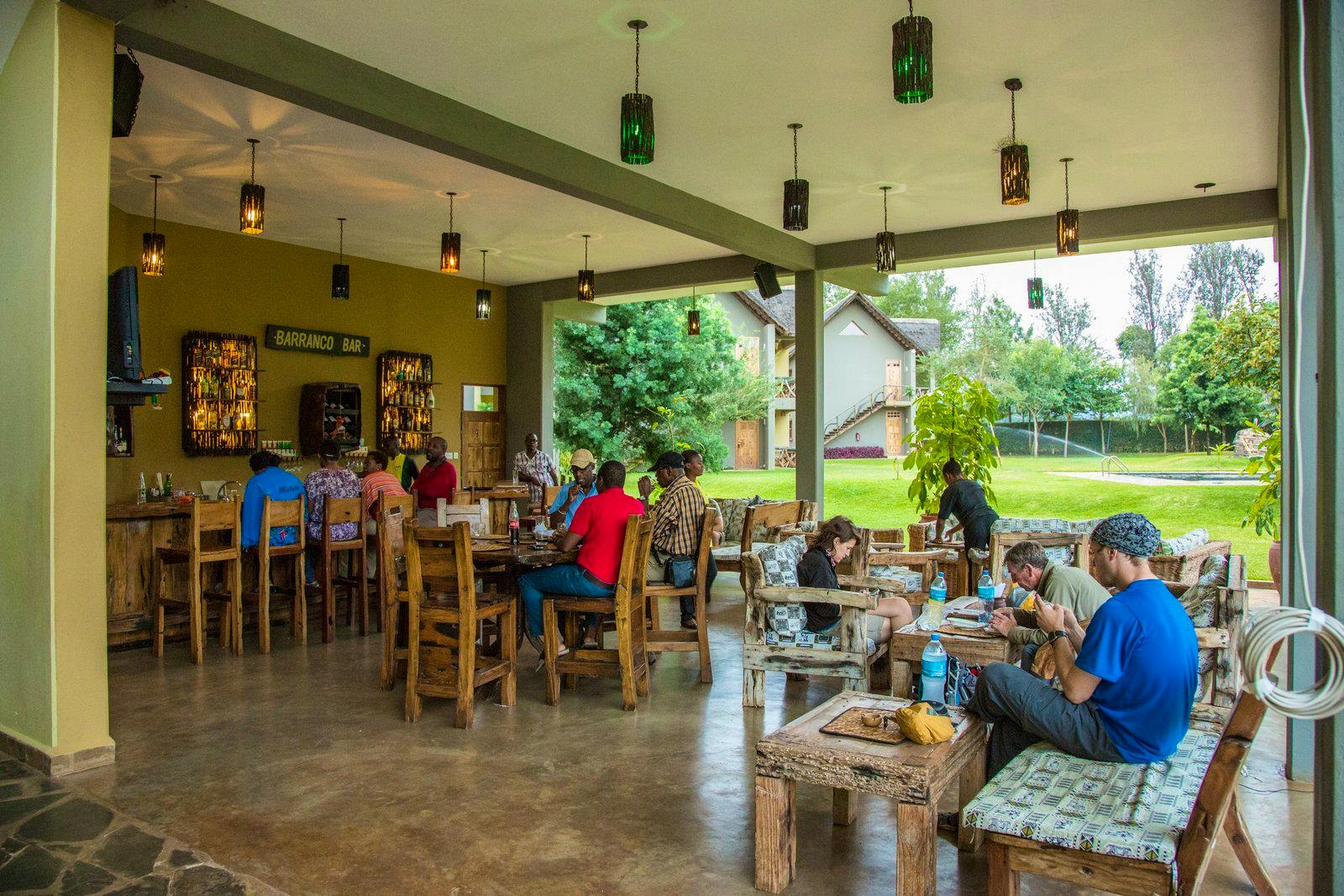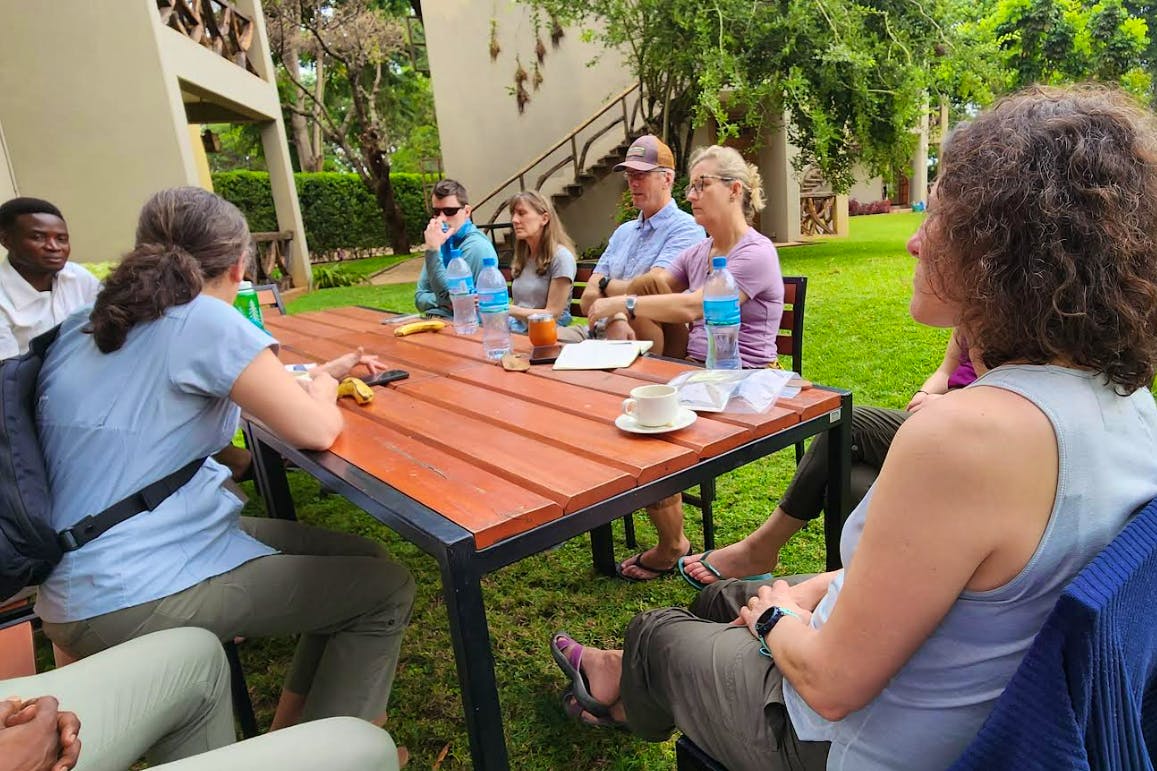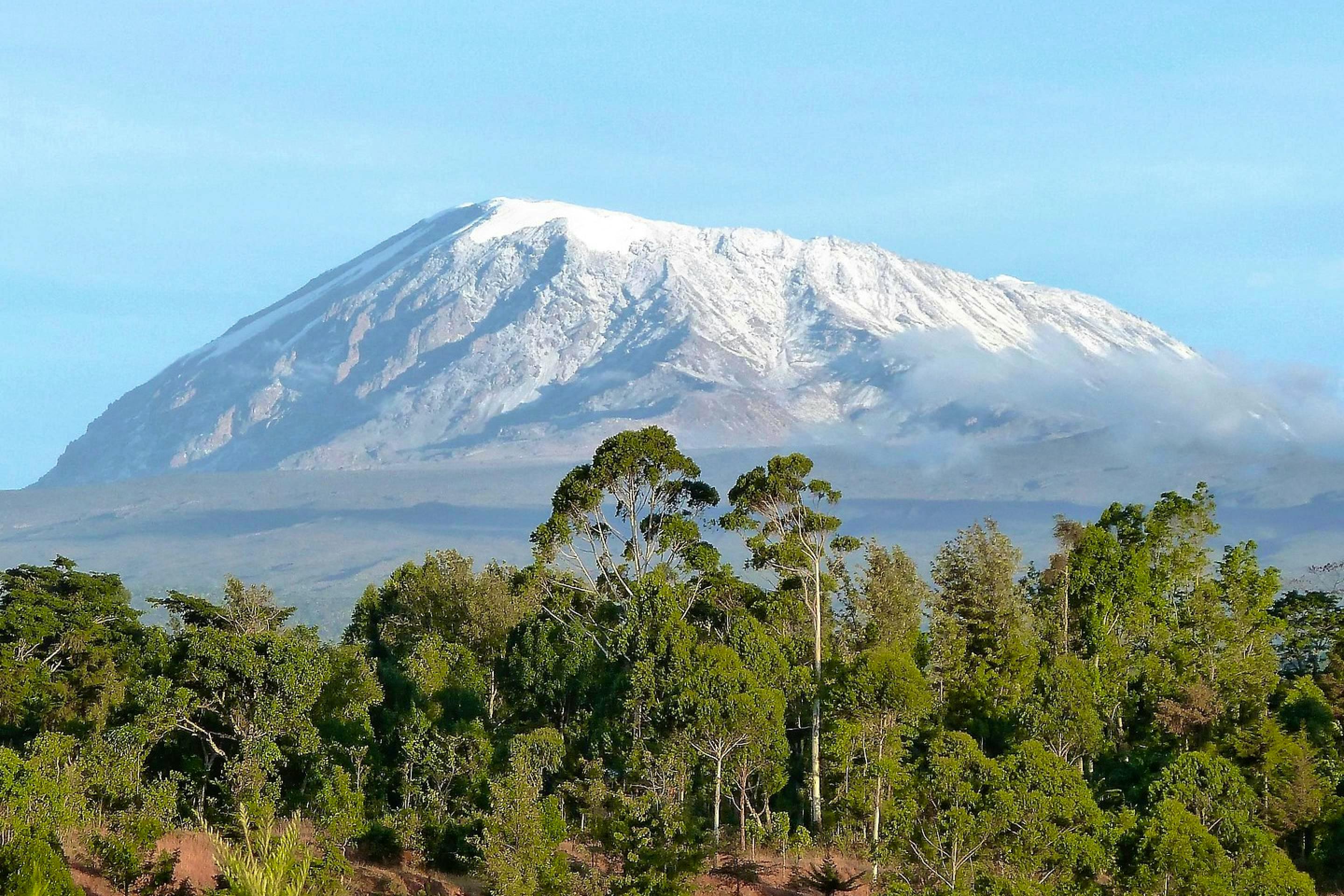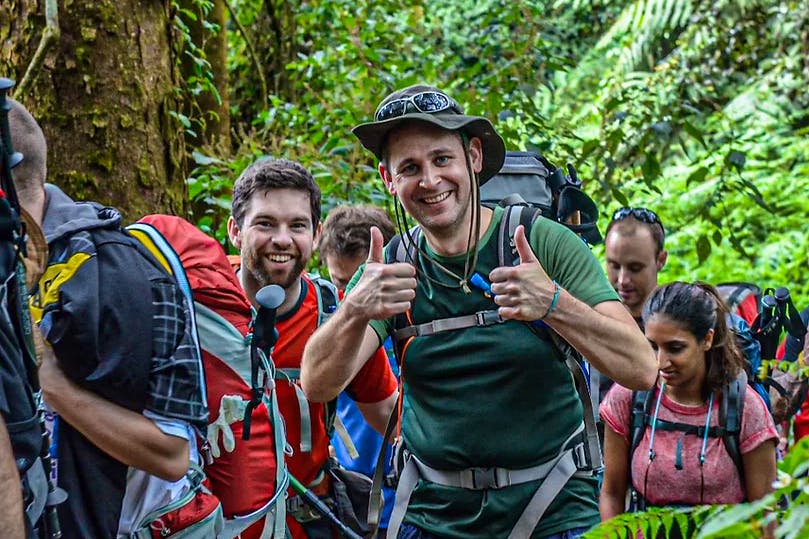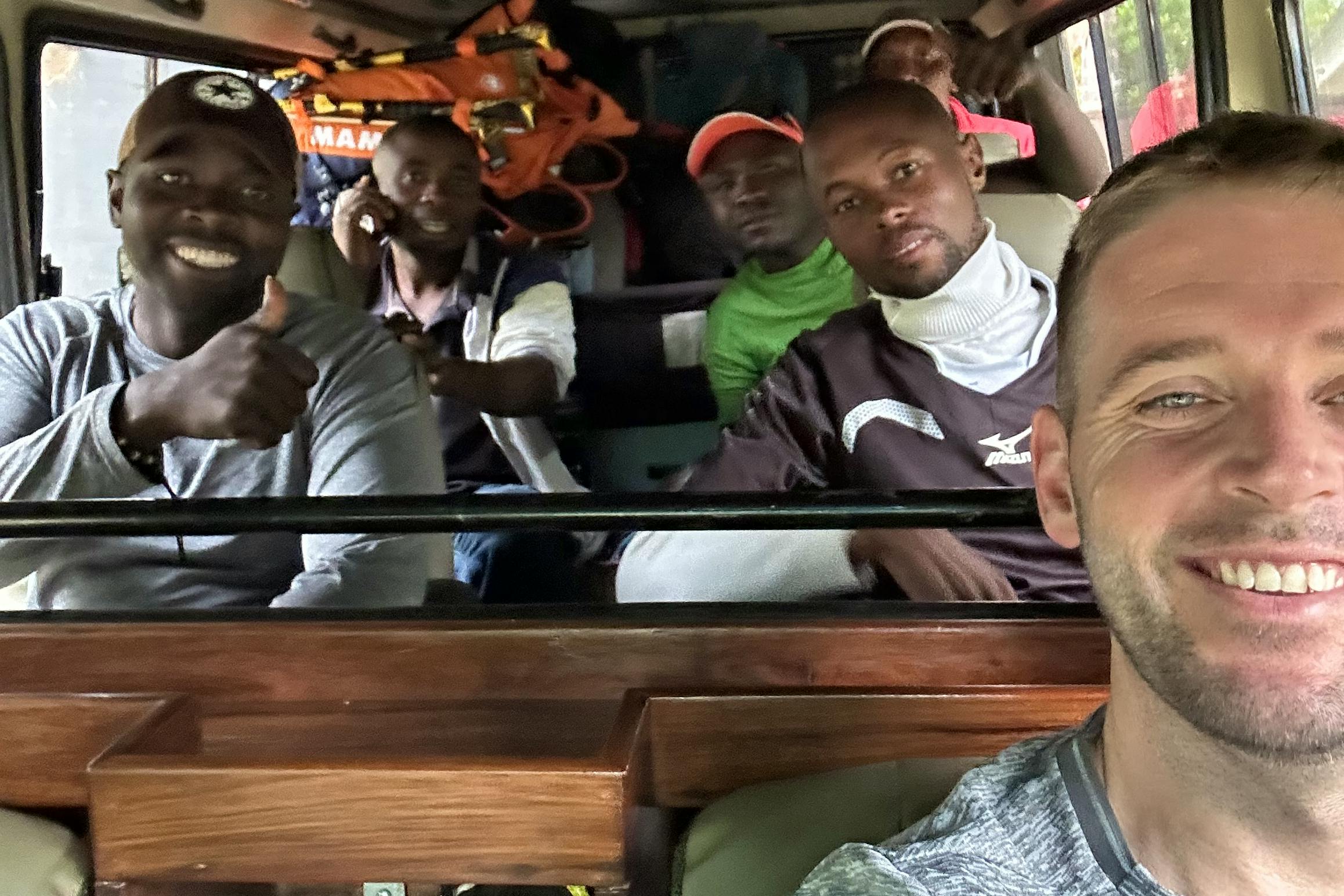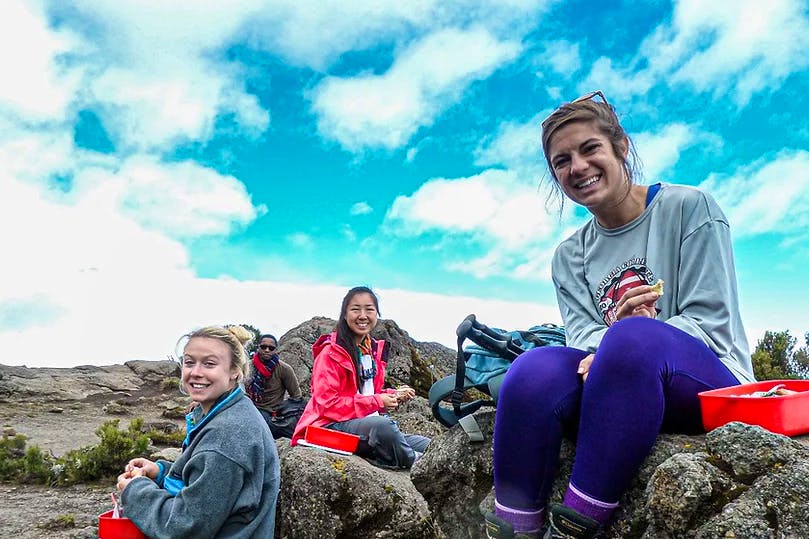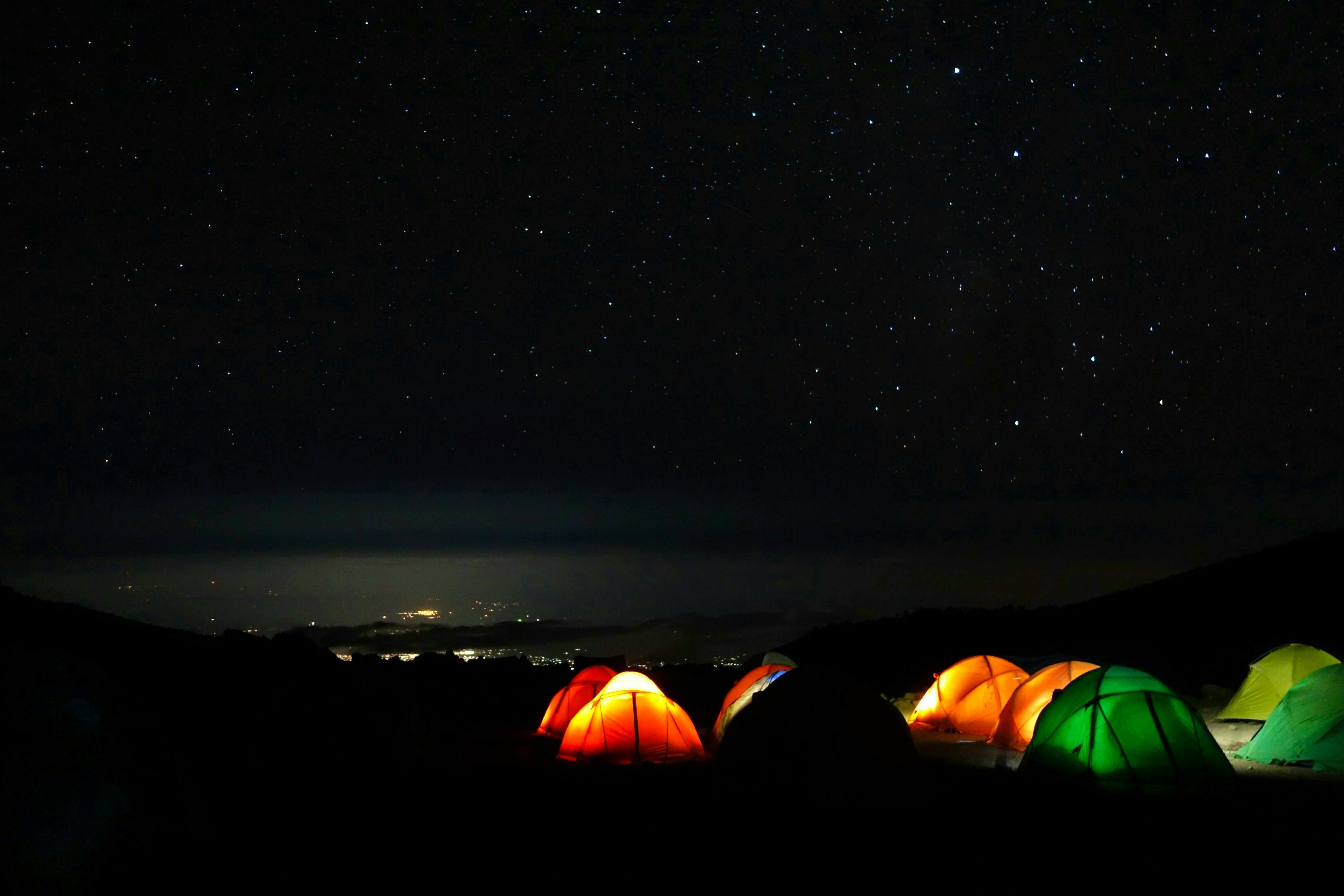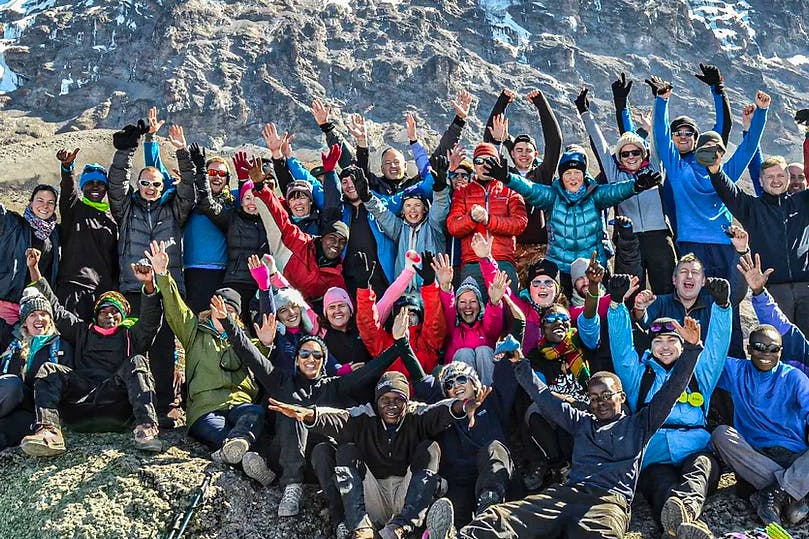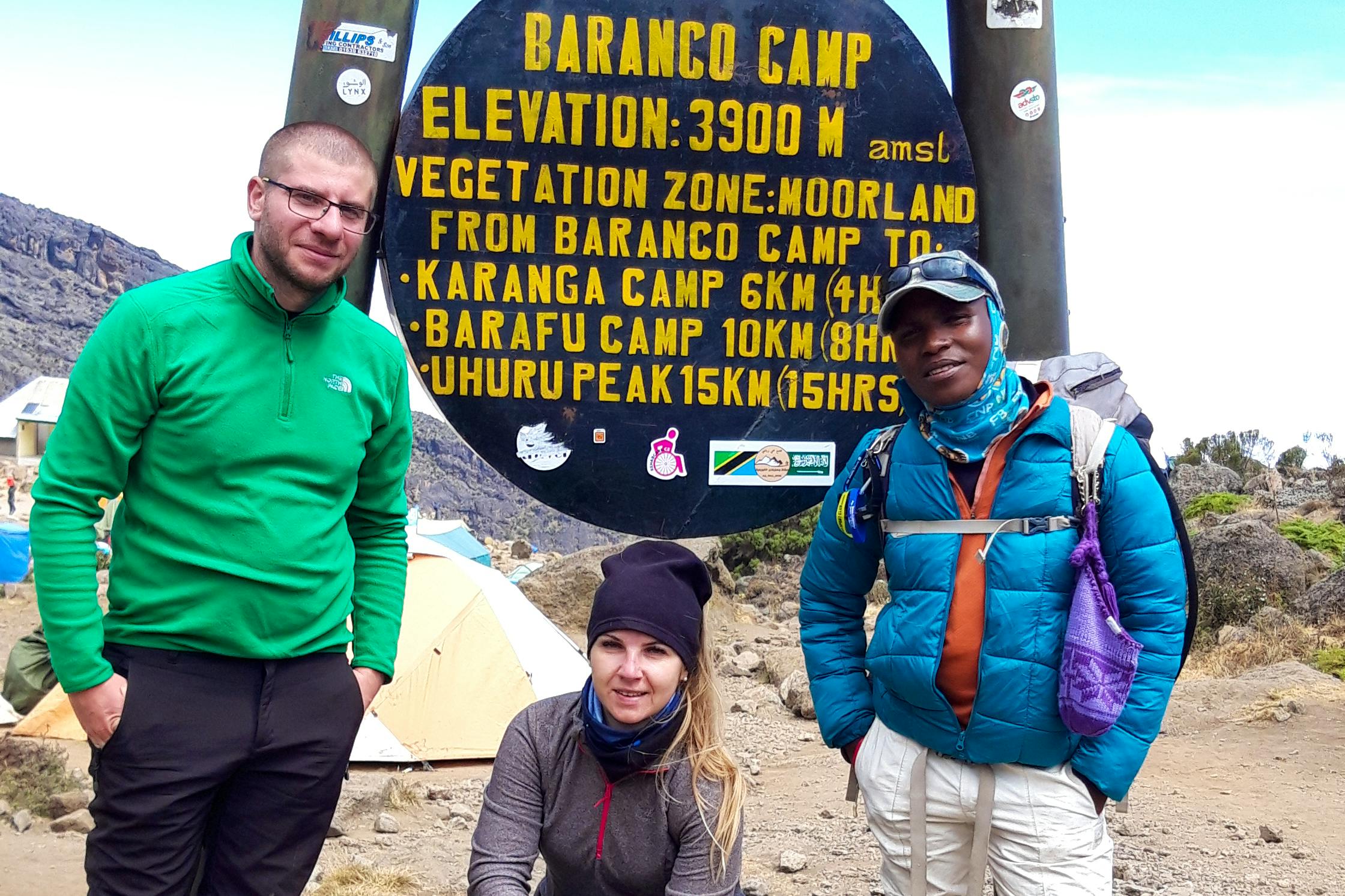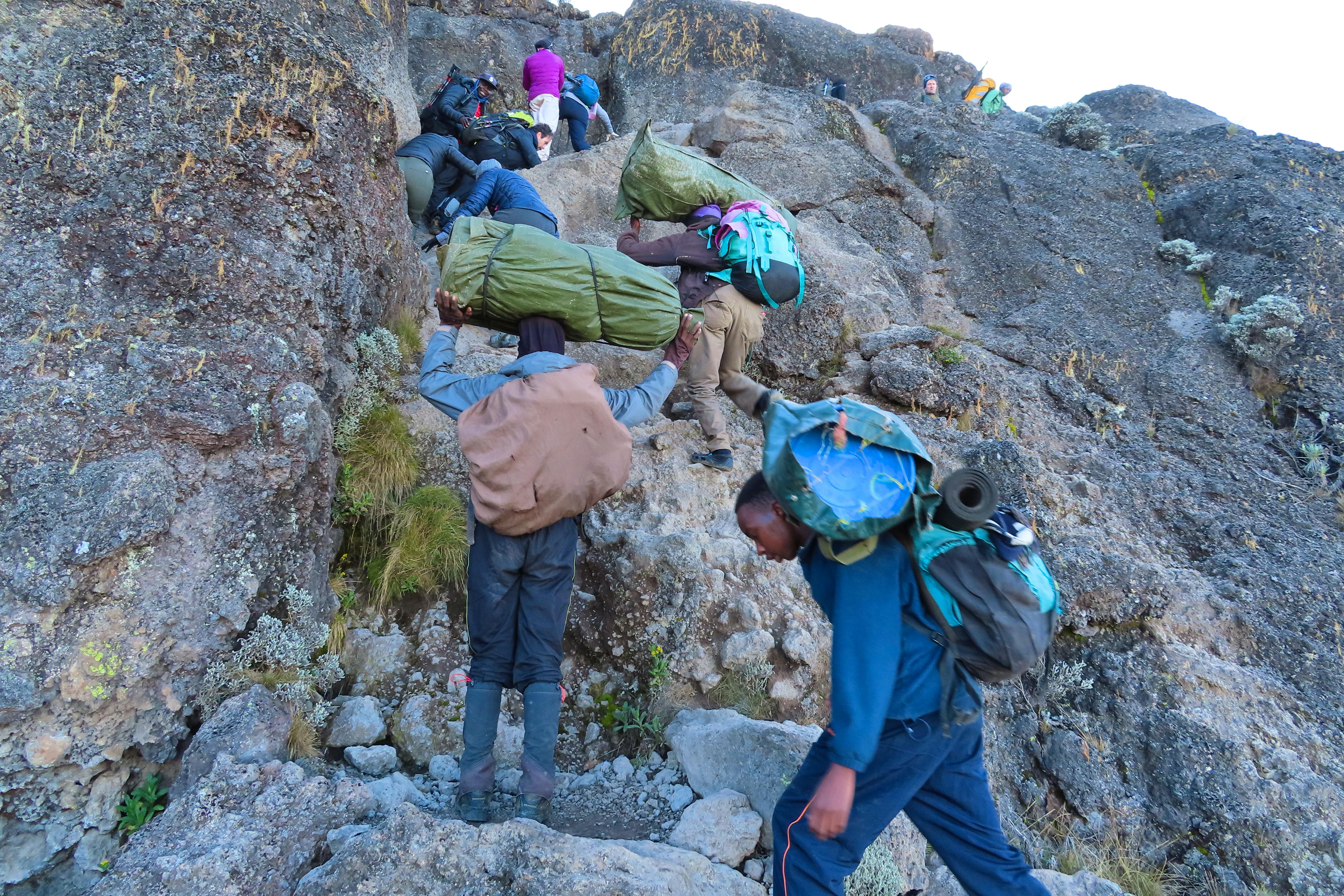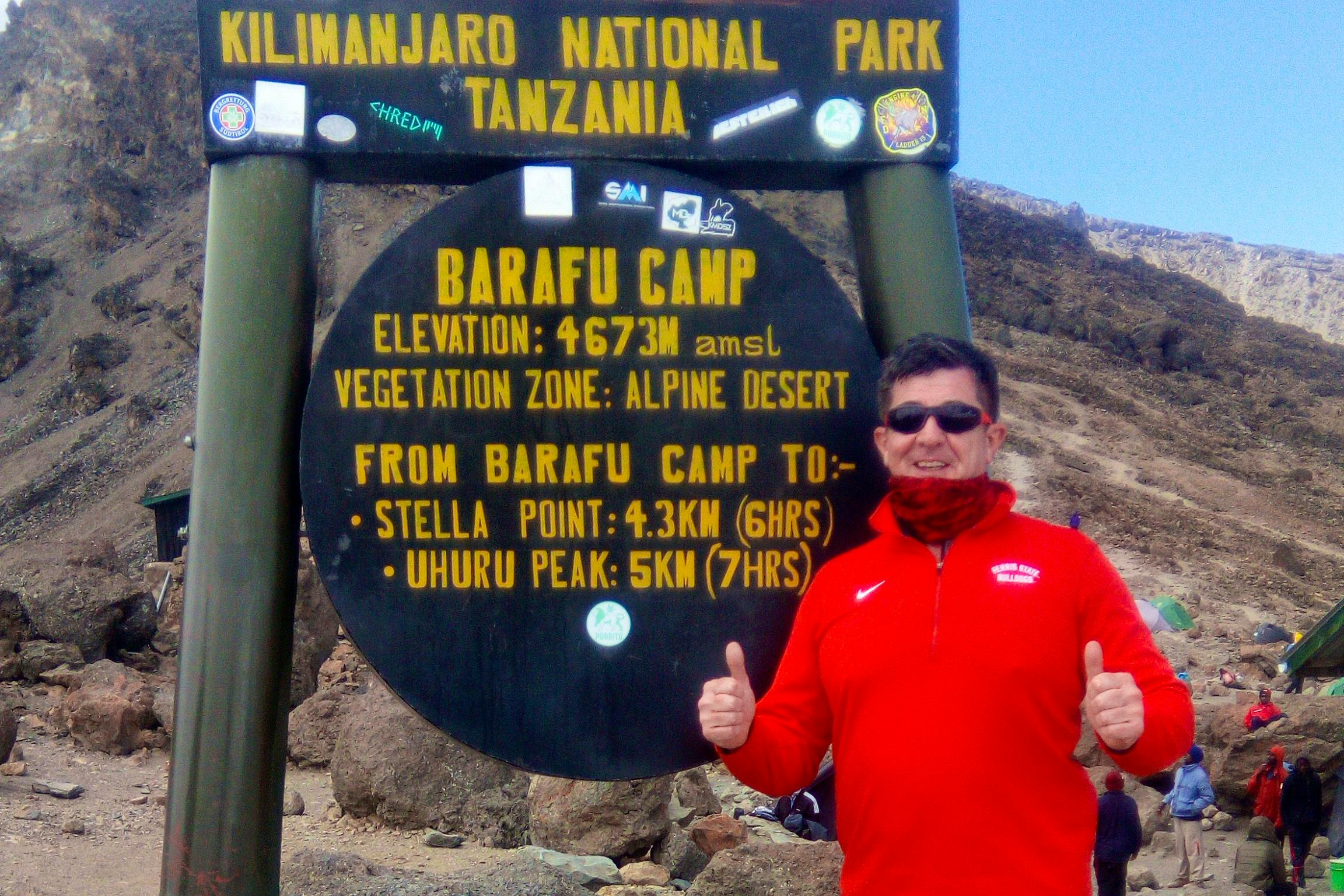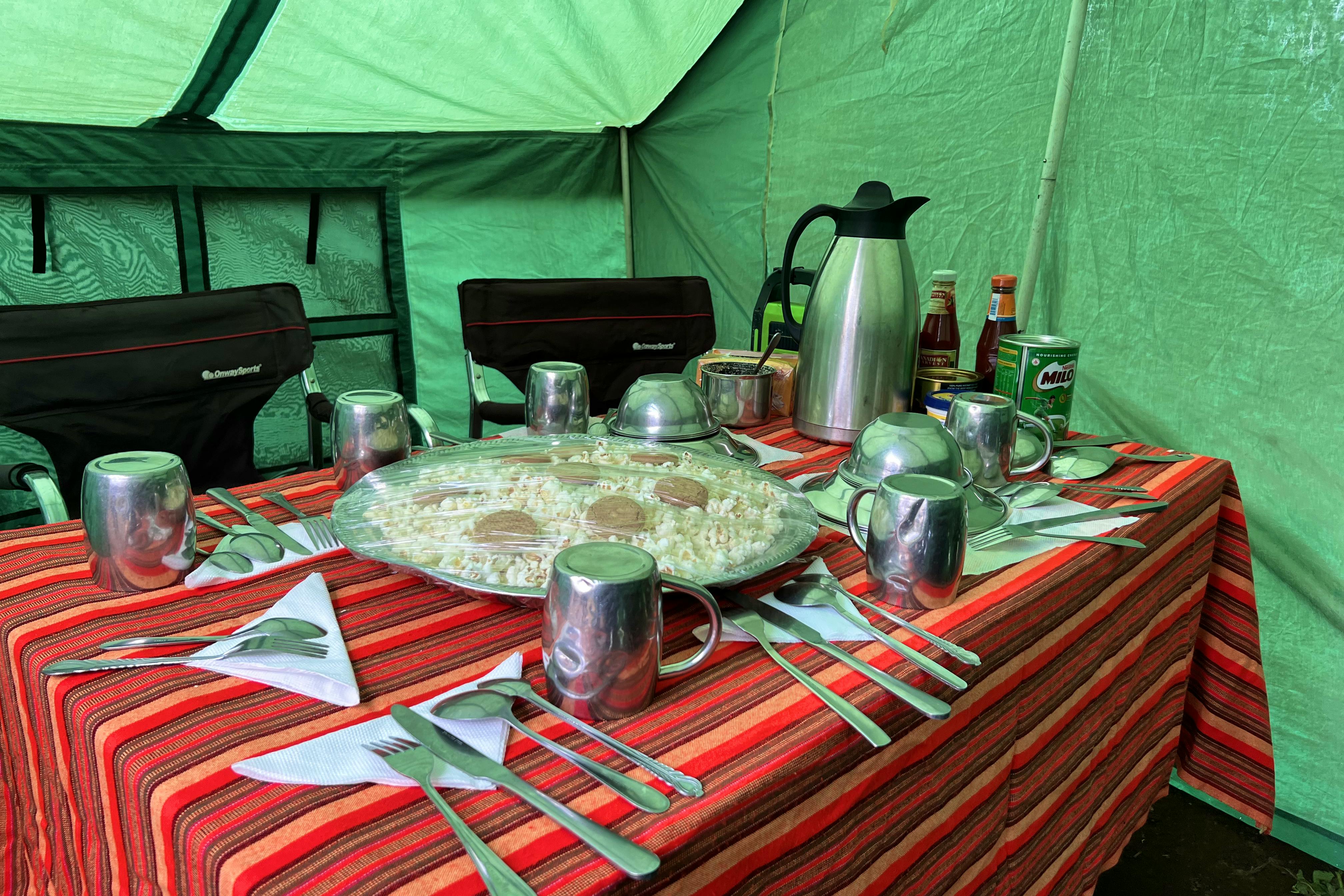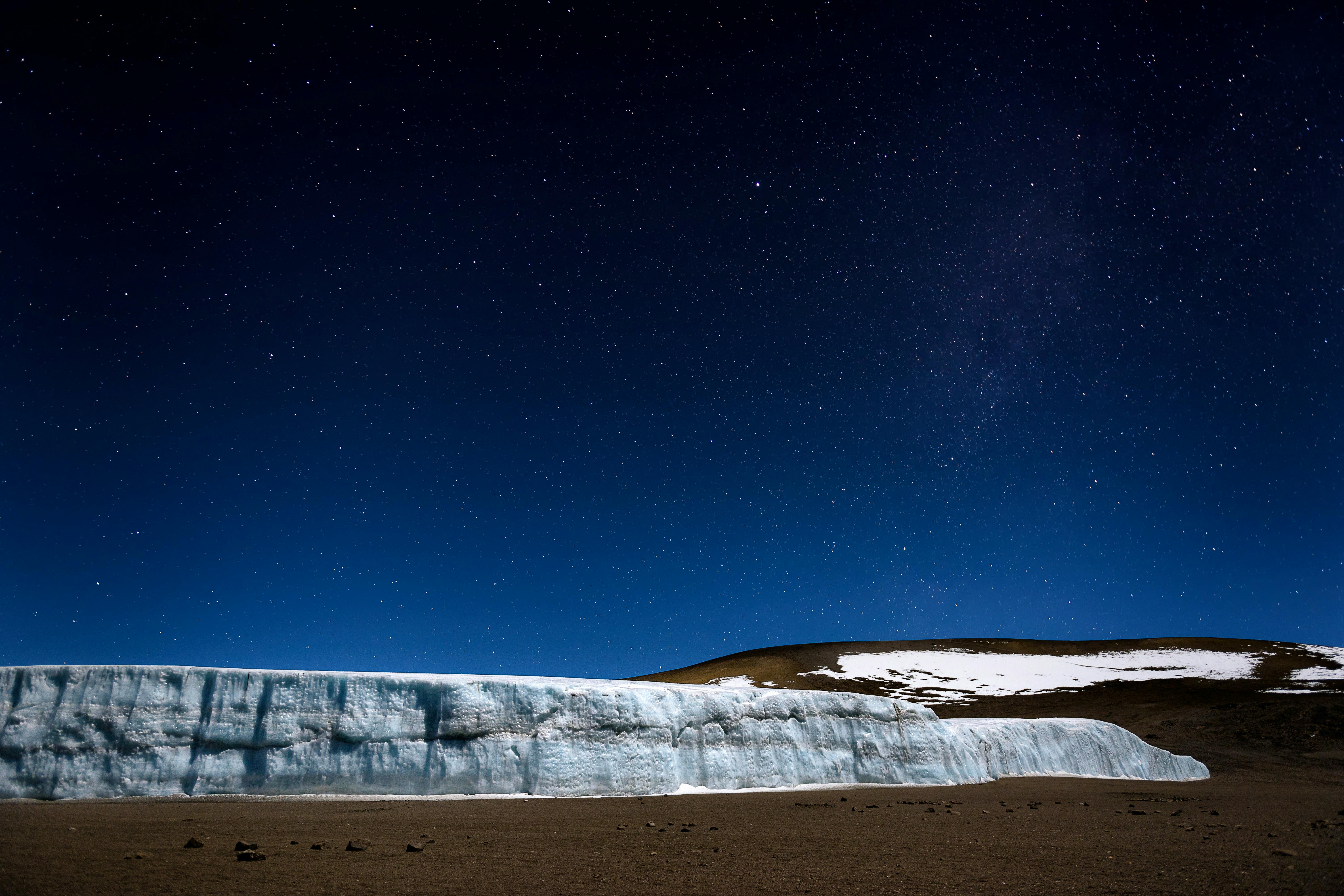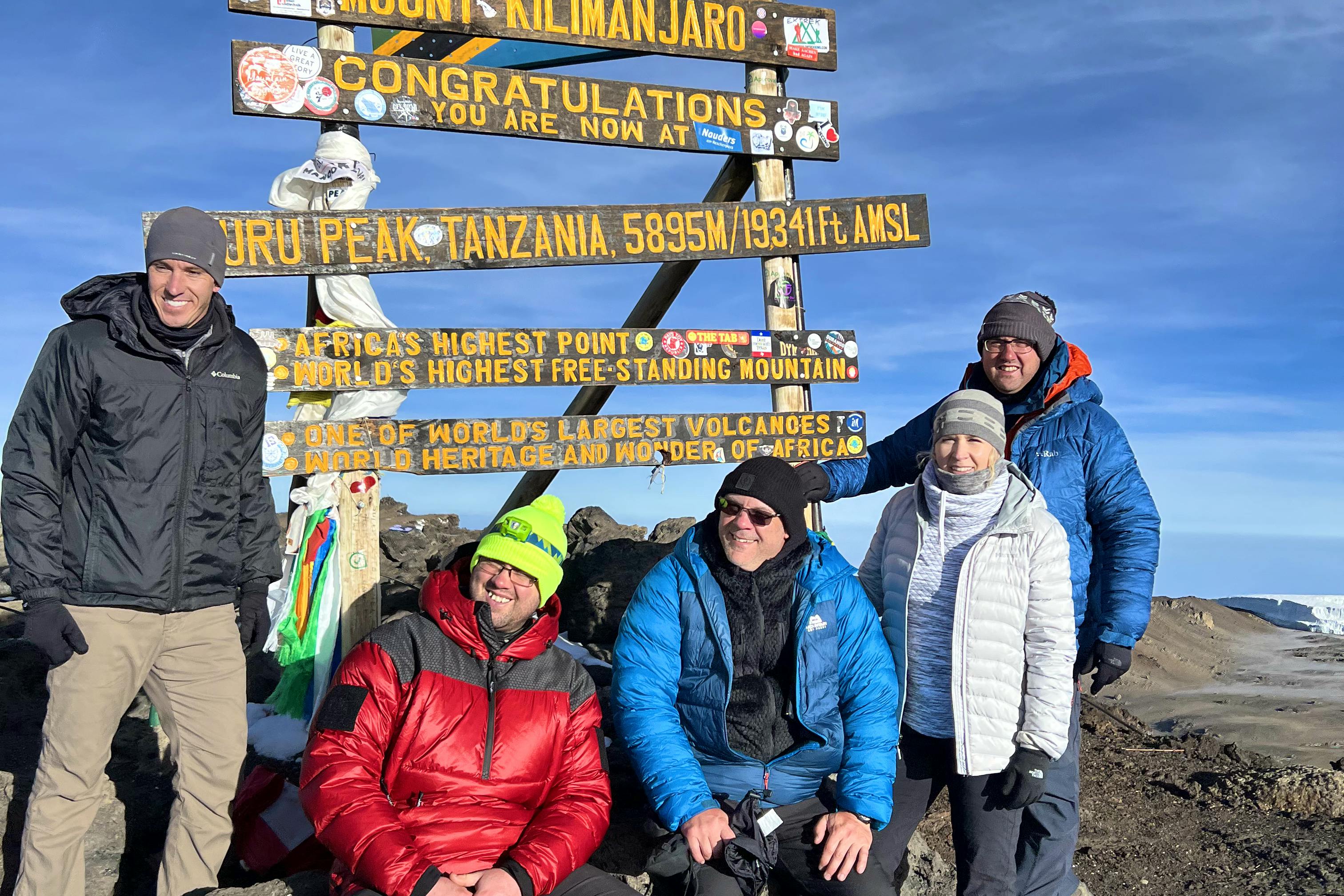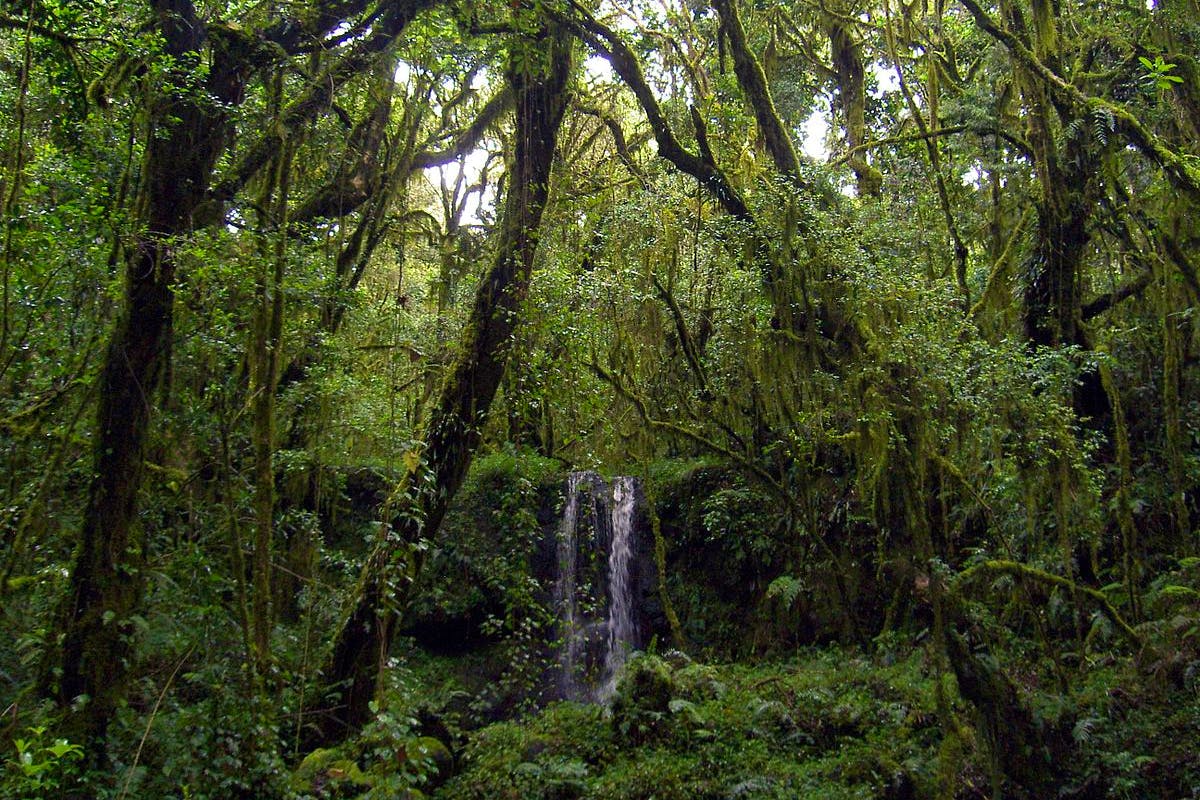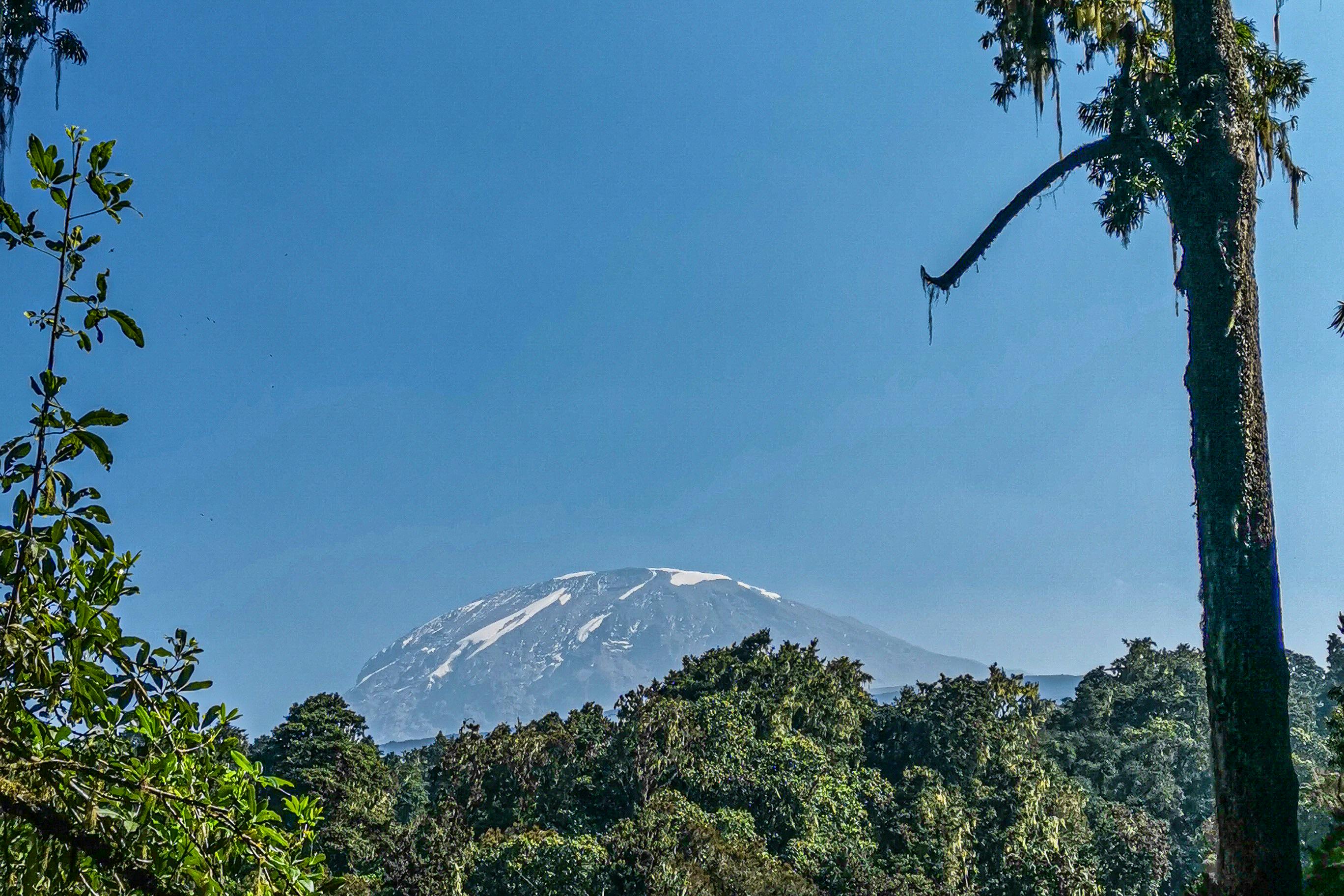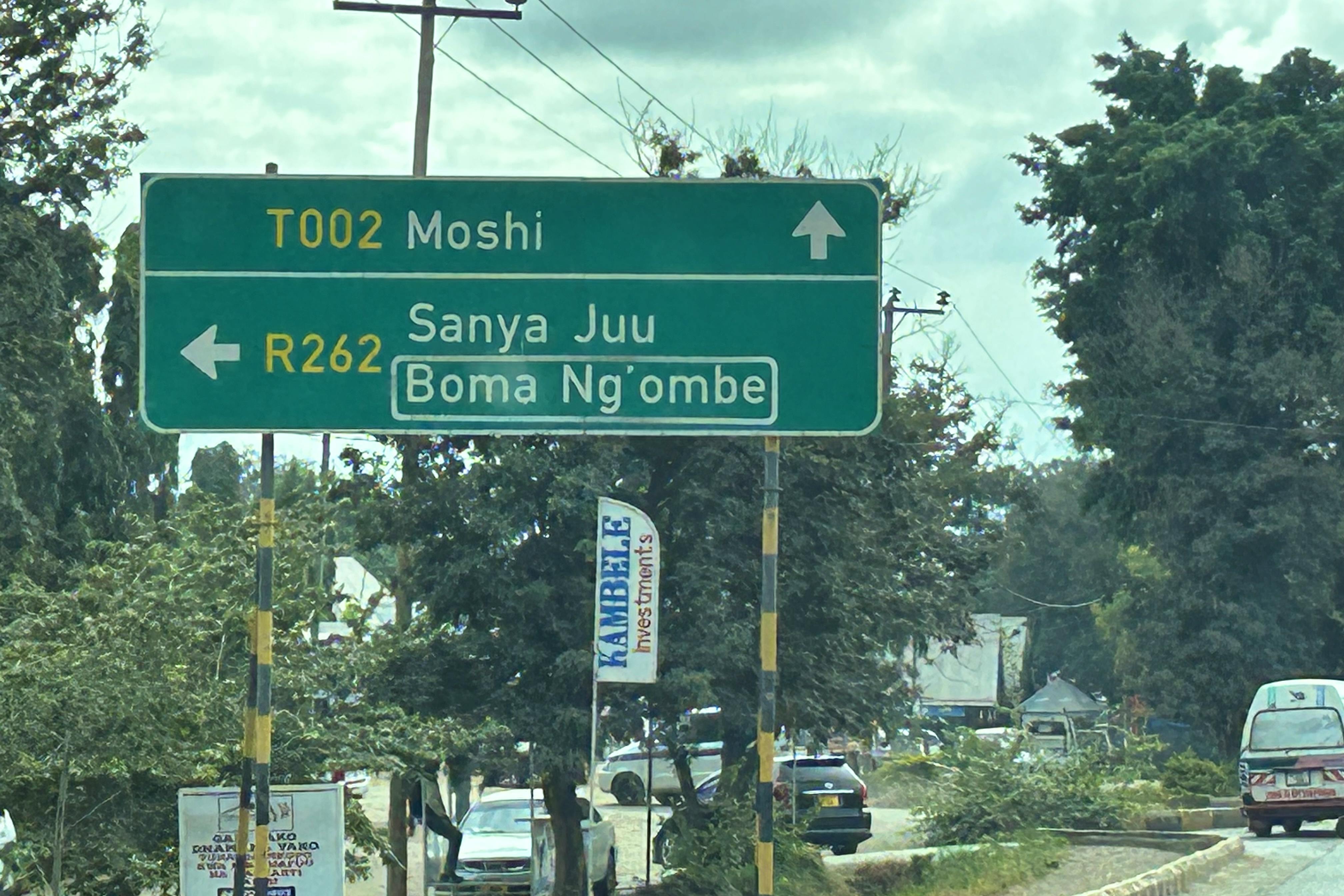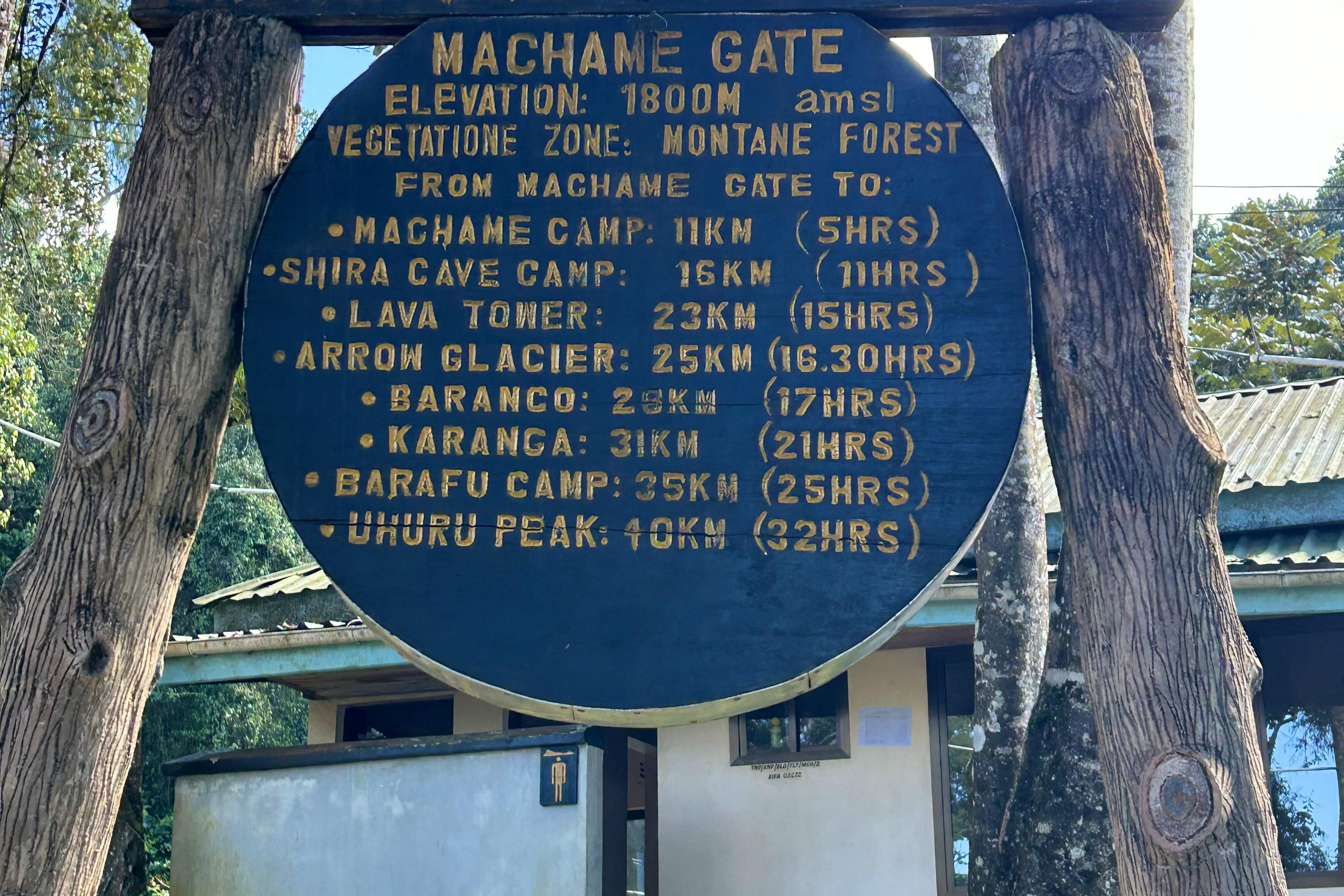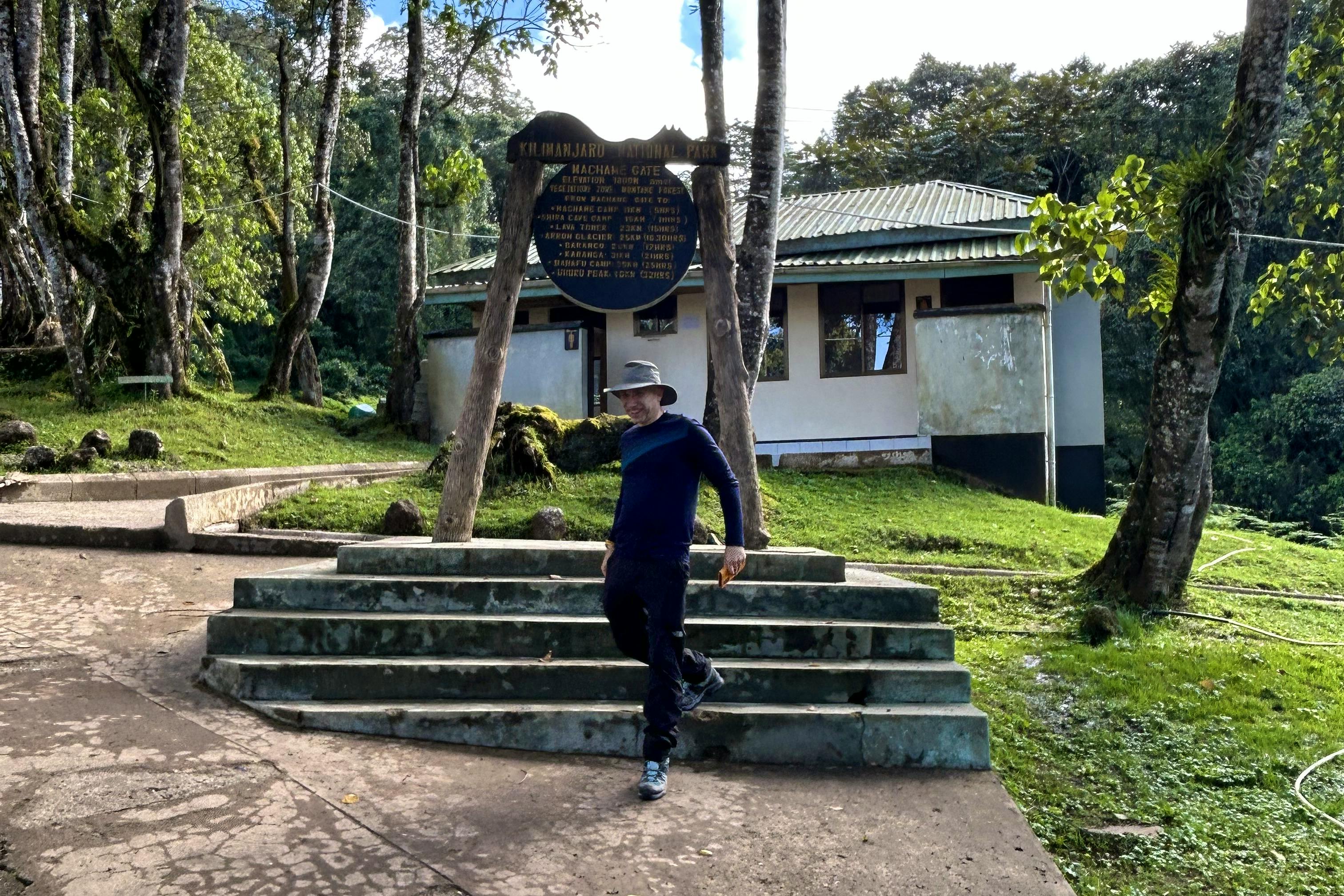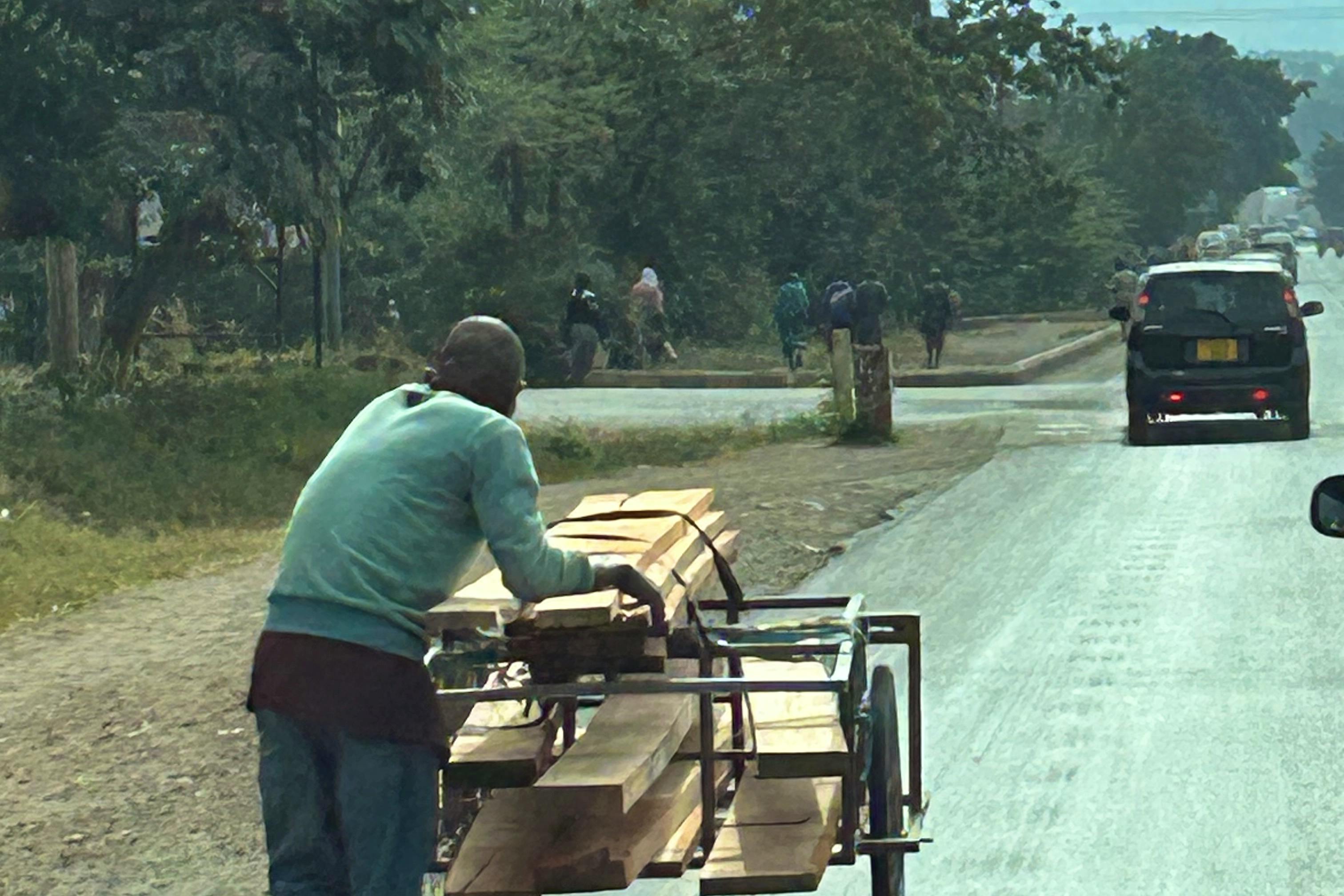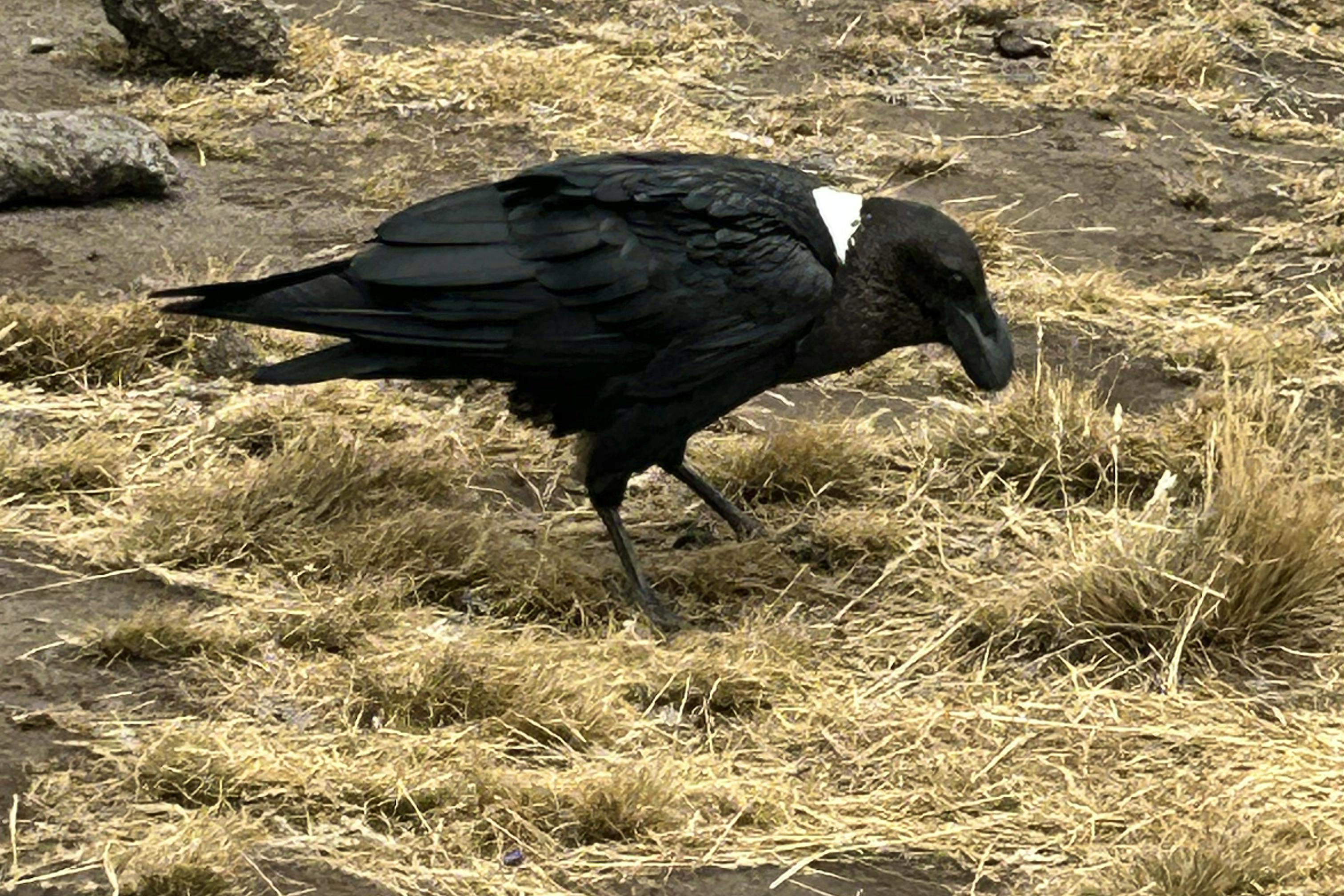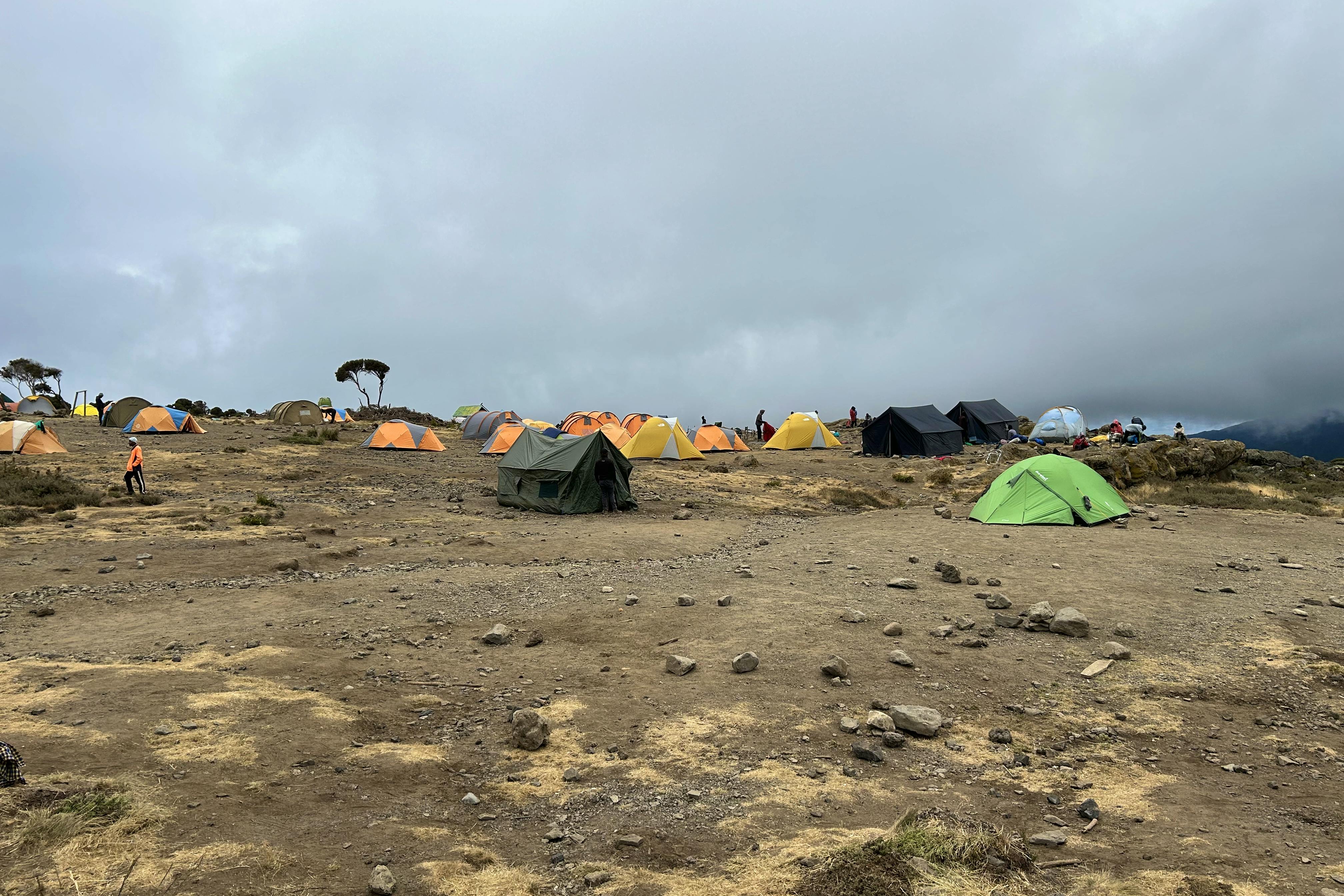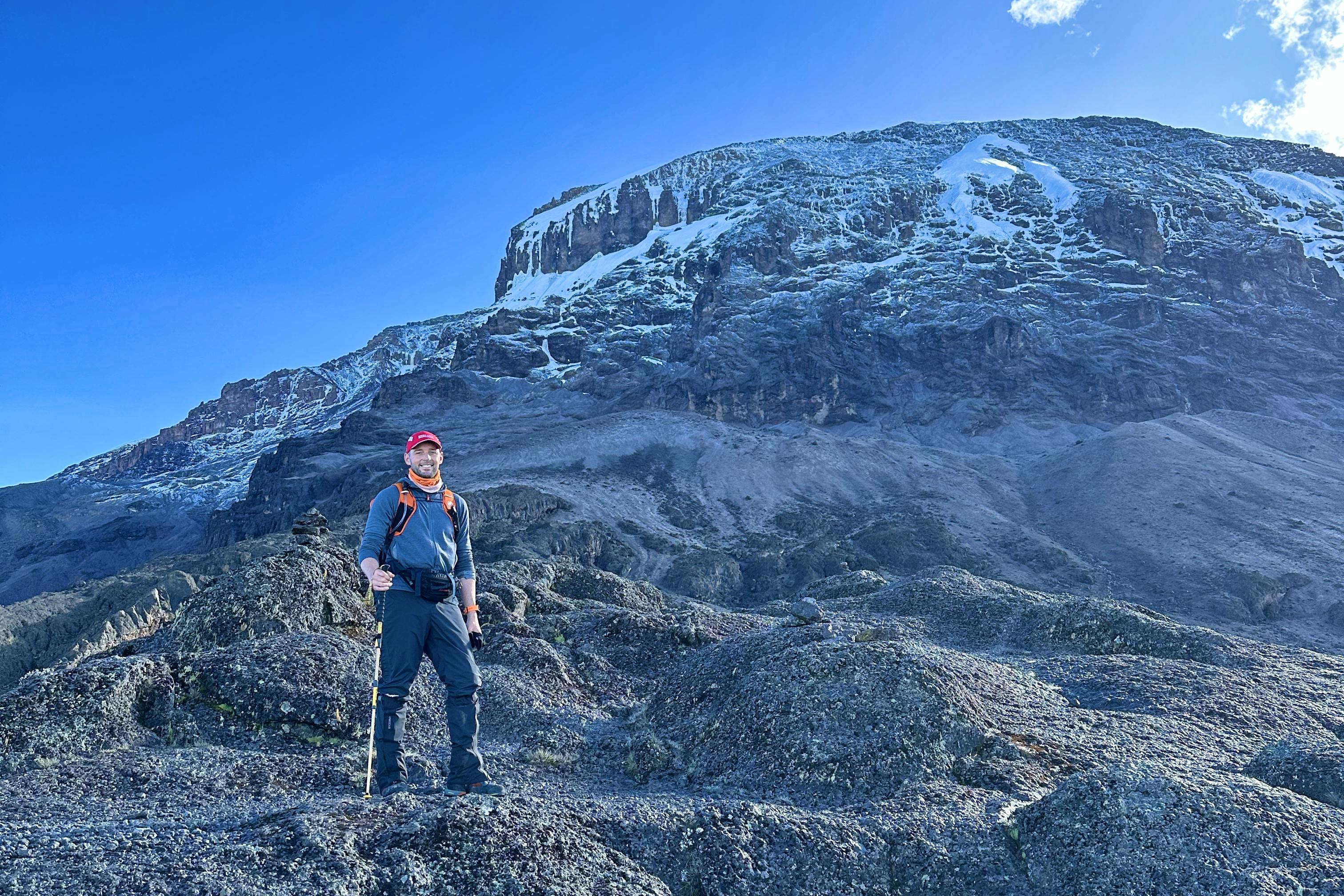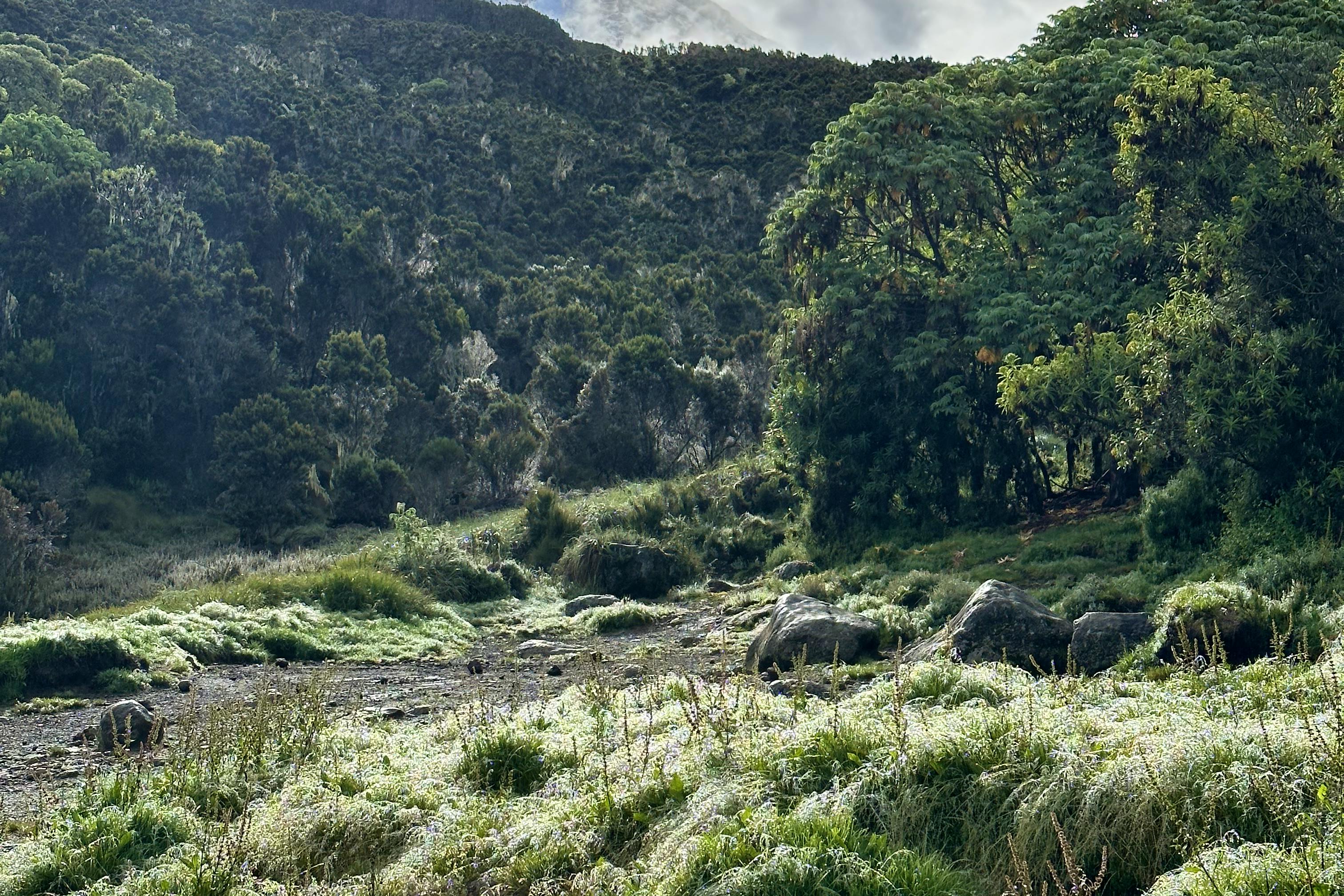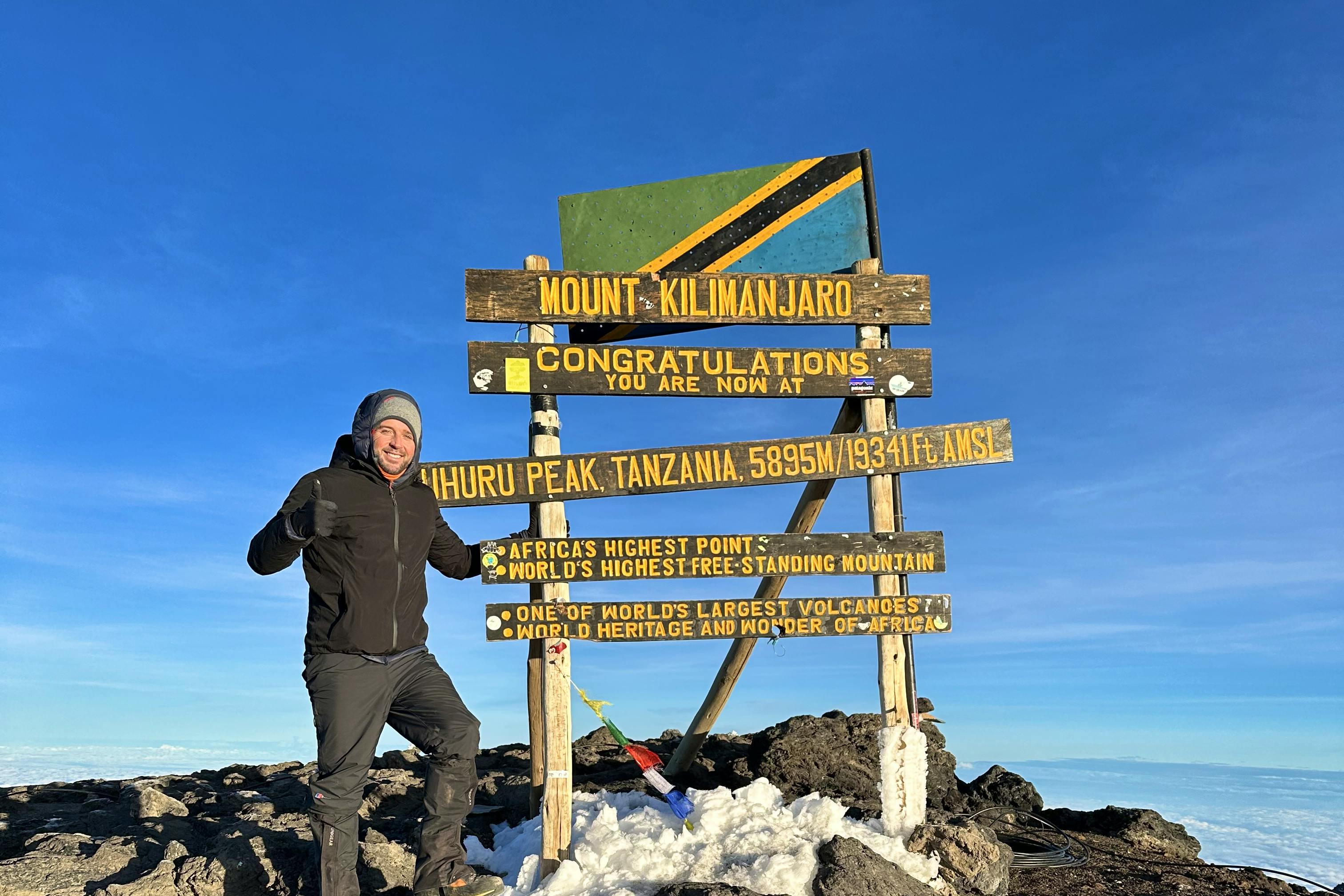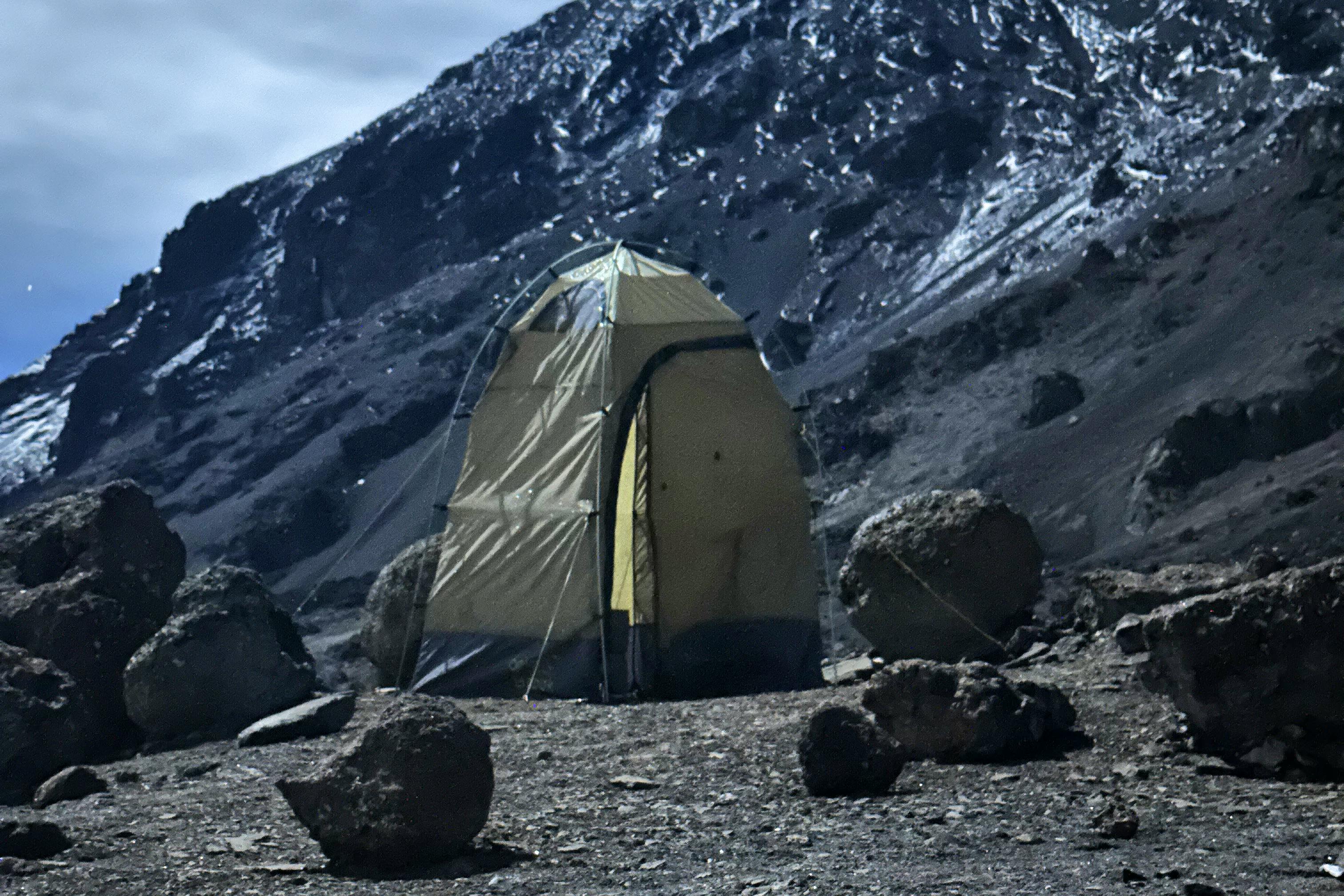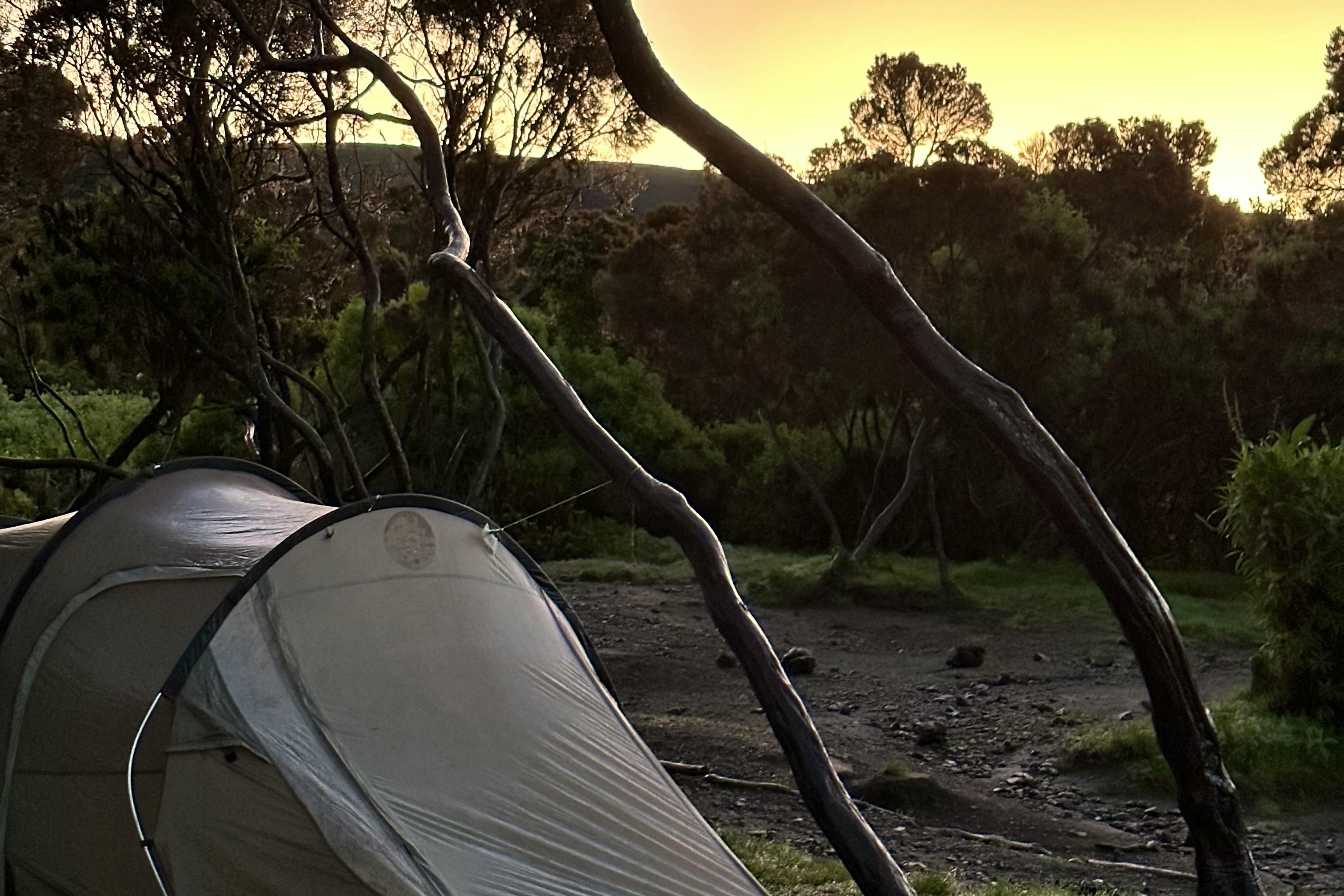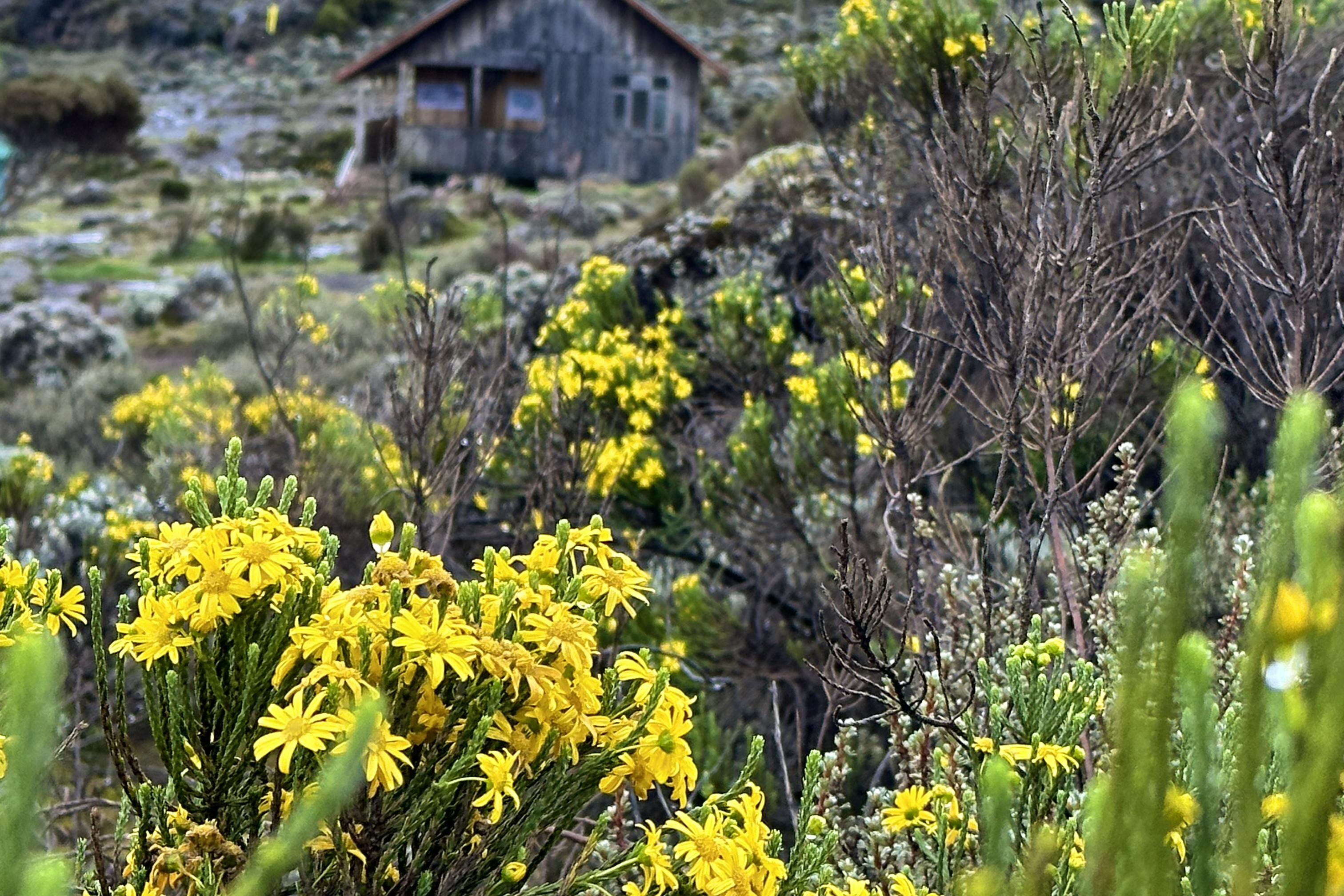Kilimanjaro Lemosho (7 Day Route)


The Lemosho route is known locally as the scenic route up Kilimanjaro. Taking the path less travelled, you're away from the crowds and have more time to acclimatise with this 7-day trekking itinerary - maximising your chances of summit success.
Itinerary
We pick you up from Kilimanjaro International Airport (JRO) and transfer you to your hotel in Moshi town, where you spend the night.
At the hotel, your guide will brief you on the upcoming trek and do an equipment check to make sure you have all the necessary mountain gear. If you're missing anything important, not to worry, we offer gear rentals.
We pick you up from your hotel at around 8:00 AM and transfer you via vehicle to the Lemosho gate, located on the western side of Kilimanjaro.
After the registration process, you start the climb steadily through the forests of the Lemosho glades to reach Big Tree Camp. This is our spot for the night.
(Trekking distance: 7km / 4.3 miles).
Today, we cover a lot of ground as we trek across a plateau of grassy moorland with volcanic rock formations.
As you get closer to Shira 2, you will get the chance to view some of the glaciers on the western side of the mountain.
(Trekking distance 16.5km /10.3 miles)
The day begins with an ascent into the climatic zone of the upland desert and the lava ridges. We trek beneath the glaciers of the Western Breach.
Our highest point for the day is the distinct pinnacle of the Lava Tower (4,640m). This is an amazing place to enjoy lunch.
In the afternoon, we descend a steep slope to our camp, which is located at the base of the Great Barranco Valley. This location is sheltered by towering cliffs with extensive views of the plains below. Time on the trail is 6-7 hours.
(Trekking distance: 10km / 6.2 miles).
Our day starts by descending into the Great Barranco ravine. We then exit up the Great Barranco Wall, which divides us from the southeastern slopes of Kibo. It’s a steep climb over rock, not technical but long and tiring.
Passing underneath the Heim and Kersten glaciers, we head toward the Karanga Valley. From here, we have another ascent to our night’s camp at Karanga.
For those feeling strong, we go for a mid-afternoon acclimatisation trek up to around 4,200m before descending back to camp for the night. Time on the trail today is 5-6 hours.
(Trekking distance: 5.5km / 3.4 miles).
Today we're trekking for 3-4 hours. After a good night’s rest and breakfast, we set off on our walk to Barafu Camp. The climb will take us across desolate scree slopes, free of any vegetation. It’s a tough steep walk made more difficult by the altitude.
On arriving at camp, we eat and spend the afternoon resting to prepare for a long night and day ahead. It is important to keep hydrated and warm at camp.
We have an early dinner and then try to get some sleep, as we get up between 11:00 PM and midnight to start our summit.
(Trekking distance: 3km / 1.9 miles).
Around midnight, we start our bid for the summit.
We climb scree slopes for 4-5 hours, gaining significant height over a short distance. We hope to reach the crater rim at Stella Point (5,739m) as the first rays of the sun hit. Spectacular ice cliffs surround us with views of the jagged Mawenzi Peak and beyond.
In another hour, we should reach the summit, Uhuru Peak (5,895m).
After celebrating this achievement, we return to Stella Point and then descend on scree slopes back to Barafu Camp for breakfast.
Finally, we head down to Millennium Camp for a well-earned rest. It's a long day with 12-15 hours trekking.
(Trekking distance: 13.4km / 8.3 miles).
A gentle trek (6-7 hours) takes us down through the rainforest to Mweka Gate.
Here, we complete park formalities and receive certificates, which you can hang up back home with pride!
We are then met by our vehicles and return to the hotel in Moshi, where you can treat yourself to a hot shower (and a cold beer or two) before our big celebration.
(Trekking distance: 12.1km / 7.5 miles).
This is a free day to wind down after the trek before your flight home.
Depending on flight times, you may want to explore Moshi town and grab some souvenirs before heading to the airport.
If you have a spare hour, we would love for you to plant a tree as part of our environmental conservation efforts in the Kilimanjaro region.
Book Now
Sorry - we currently have no available dates.
To enquire about upcoming trips or to arrange a private excursion, kindly contact us.
Don't see your date? We may be able to open a new group or setup a private trip if there are 2 or more people in your party. Contact us.
What's Included
Included
- Professional mountain guides, cooks, and porters.
- Accommodation: You stay in a hotel before and after the trek. During the trek, you sleep in tents.
- All tour permits and camp fees.
- -29°C Extreme Limit sleeping bags and mats.
- Airport transfers (3 available pick-up times depending on your flight).
- All food during the 7-day trek (breakfast, lunch & dinner).
- Dinner at the hotel on the first & last nights, as well as breakfast on departure day.
- Filtered water throughout the trek.
- Tree donation in support of local environmental conservation projects.
Not Included
- International and local flights.
- Lunch on the first & last day.
- Tips & gratuities.
- Personal travel/rescue insurance.
- Visa fees.
- Single supplement: US$90 per person (optional).
- Portable toilet: US$150 per group (optional).
Have a question?
If you have any questions about this trip or want to speak with an expert, get in touch.
We're ready to help.



Rated 5.0
40 verified reviews
Paul
(Sep 2023)
David
(Aug 2023)
Karen
(Aug 2023)
Edward
(Apr 2023)
Sam
(Feb 2023)
FAQs
Before you go
See above for inclusions and exclusions.
Kilimanjaro is a steep mountain with a long summit day. You need to be fit enough to hike for an eleven-hour day. To train, we recommend running or playing sport, two or three times a week. It's also great to do a few practice hikes with a 5kg rucksack before you head out.
Here is a typical packing list for a Kilimanjaro trek: Documents: • Passport • Travel insurance details • Boarding passes for flights • Two passport photos • Driver’s license (if needed) • Cash • Credit/Debit Card Sleeping: • Sleeping bag liner (optional) Footwear: • Trekking boots: 3 or 4 season lightweight • Shoes for the plane (optional) Clothing (please make sure that you have non-cotton clothing for trekking): • Two base-layer t-shirts (e.g. running t-shirts) • Fleece/soft-shell jacket • Waterproof jacket • Down jacket for warmth • Travel clothes and city wear • Underwear • Base-layer trousers (optional) • Waterproof trousers • Trekking trousers • Trekking shorts (optional) • Mulitple pairs of thick wool mountaineering socks • Lightweight and breathable trekking socks • Gloves and wool hat Other: • A daysack: 35 litres • A duffel or rucksack with straps to go over your back • Dry Liner or Dry Bag • Water bottle/thermos: At least 2L. Nalgene bottles best. • Sunglasses • Suncream • General toiletries, contact lenses, glasses (if needed) • Towel • Electronics - head torch, travel adaptor, phone & charger • Lipsil • Book • MP3/music and headphones • Travel wash • Hand sanitiser, wet wipes • Trekking poles (optional) Please note that all plastic bags, regardless of their thickness, are prohibited from being brought into Tanzania. This excludes packaging for medical supplies. If you don't want to purchase your own kit or need to travel light, you can hire most of the equipment from our guides in-country. Get in touch for the list and rental prices.
Most non-citizens need a Tanzanian tourist visa. This is easily obtained upon arrival. Tanzanian visas are also available online. Beware when purchasing your visa online, as there are many illegitimate companies. Below is a link to the official Tanzanian High Commission UK website. While applying for a visa, you will need the following host company details: Full Name: Ahsante Tours & Safaris Limited Mobile number: +255759690257 Email: info@ahsantetours.com Company name/Registration number: 100817209 Physical address: Plot 29-A, Karanga Drive, Moshi – Kilimanjaro Accommodation (where you will stay): Weru Weru River Lodge Address: P.O.Box 855, Mailisita, Moshi-Kilimanjaro, Tanzania
The currency used in Tanzania is Tanzanian Shillings. Some places will accept USD ($), but you will get an unfavourable exchange rate with everything you purchase.
Yes, If you are travelling solo and would like your own room and tent for the duration of the trip, you can pay for a single supplement. The single supplement is an optional extra with a cost of $90 per traveller. This is payable in-country. Should you not wish to apply the single supplement, we will pair you with another group member to share accommodation during the trek (twin hotel room and shared tent).
Porters are included as part of your trekking team. The porters will carry all the supplies, camping gear, water and also your main luggage. There is a 15kg limit for personal luggage that the porters will carry. This should be packed into a flexible duffel bag, 90l is a good size. This personal luggage includes your sleeping bag (provided) which must also fit into the duffel bag. Extra luggage and suitcases can be left in the locked storage room of the lodge.
It’s highly recommended you take out personal travel insurance. Travel cover protects you in the case of unforeseen circumstances, including cancellations, injuries, equipment loss, flight changes and other events that could negatively impact your trip. We suggest specialist adventure travel insurers, [Rise & Shield](https://riseandshield.com/). They cover 100s of activities and are easy to deal with if you need to make a claim. They also cover unique scenarios, like trekking at altitude or emergency evacuation in hard-to-reach places, that ordinary travel insurance doesn’t cover.
On your trip
You stay in a hotel at the beginning and end of the trek. The lodges offer twin shared rooms and basic showering facilities. During the trek, you will be given a 3-man tent and use it as a twin share. Single supplements are available for the duration of the trip for $90. Please ensure you request this on your registration form before you depart. If you need to book any additional nights at the hotel, you can do so here: https://panamagardenresort.co.tz/
We pick you up from Kilimanjaro International Airport on day one and drop you back off at the end. We recommend checking comparison sites such as Skyscanner for the best flight deals.
When you go above altitudes of 2,500m (as is the case on Kilimanjaro), there is less oxygen which poses a risk of altitude sickness. High altitude sickness can happen to anybody, regardless of age or fitness. Symptoms vary between individuals but commonly include headaches, nausea, shortness of breath, and numbness in fingers and toes. These symptoms can come on unexpectedly and get severe quickly. To decrease the chances of experiencing altitude sickness, you need to allow your body time to acclimatise properly. Although impossible to completely prevent, we've designed our itineraries to give guests the best chance to adjust to the altitude changes. Ahsante guides have years of experience in recognising and helping guests deal with altitude sickness. Note that oxygen is not used on Kilimanjaro to help guests reach the summit or to 'treat' altitude sickness. The only cure for altitude sickness is to immediately descend to lower ground. In severe cases, oxygen may be given to provide enough temporary relief to allow the affected guest to descend. In extreme cases, altitude sickness on Kilimanjaro can be fatal. We put your safety first. We trust our guide's expertise, their decision on whether or not to continue is final.
You have chefs with you on the hike who can cater for all dietary requirements. You have three nutritious and filling meals each day, which help keep your energy levels high. Please make us aware of any requirements on your registration form before departure. Filtered water will be readily available free of charge.
It is customary in Tanzania to tip guides and porters. The amount that you tip is completely up to you. As a good rule of thumb, generally participants will tip around US$200 per customer (not per guide). You can give this to the head guide, and they will distribute it amongst the team of guides, porters and cooks.
Start: There are three pick-up times (10:00 AM, 5:00 PM or 11:59 PM) from Kilimanjaro International Airport on the first date of your trip. End: On the last date, you can fly at any time, and your guides will arrange transfers that work best for the group.
Portable toilets are an optional extra. The cost for this extra service is $150, payable at our offices, in-country. The group can decide whether they would like this extra service and split the cost between group members.
The water is filtered and boiled by a Katadyn filtration system. We recommend you also bring water purification tablets or a filter bottle.
Other FAQs
Most groups have 12 people, with a maximum of 14.
Yes, of course! Safari in Tanzania is an amazing experience - simply message the Skyhook team before/after booking and we'll help you arrange a 2-7 day safari experience.
We can't advise you on this, but recommend you check at http://www.fitfortravel.nhs.uk/home.aspx.
Kilimanjaro is very close to the equator, so the temperatures are very similar year-round. They can range from around 20C (70F) at the base -10C (14F) on the summit. The dry season is June-September, and during these times there is typically just a dusting of snow on the summit. These are also the busiest months. The wet season is Nov-May, where snow depth on the summit can regularly be 20-30cm.
The minimum age for this trek is 18 years.
Your head guide is Holyfield
All trips on Skyhook are run by small, hand-picked local guiding companies. For this trip you'll be led by Holyfield and the guiding team based in Moshi.
By booking through Skyhook you'll be joining a small-group trip. This can make it nice and sociable (you'll be added to a group chat after booking), and guarantees great value for money!

Why Skyhook?
Join over 27,000 Skyhook adventurers who've used our platform to book directly with our vetted local guides, at local prices (we never markup).
Expert Local Guides
Experienced local guides, handpicked by us.
Best Prices
Never pay a markup on the local guide's price.
Exclusive Club
Earn loyalty rewards every time you travel.
Great Social Vibes
Small group tours provide a richer experience.
Stellar Feedback
Over 2,800 reviews, average of 4.9/5 stars.
